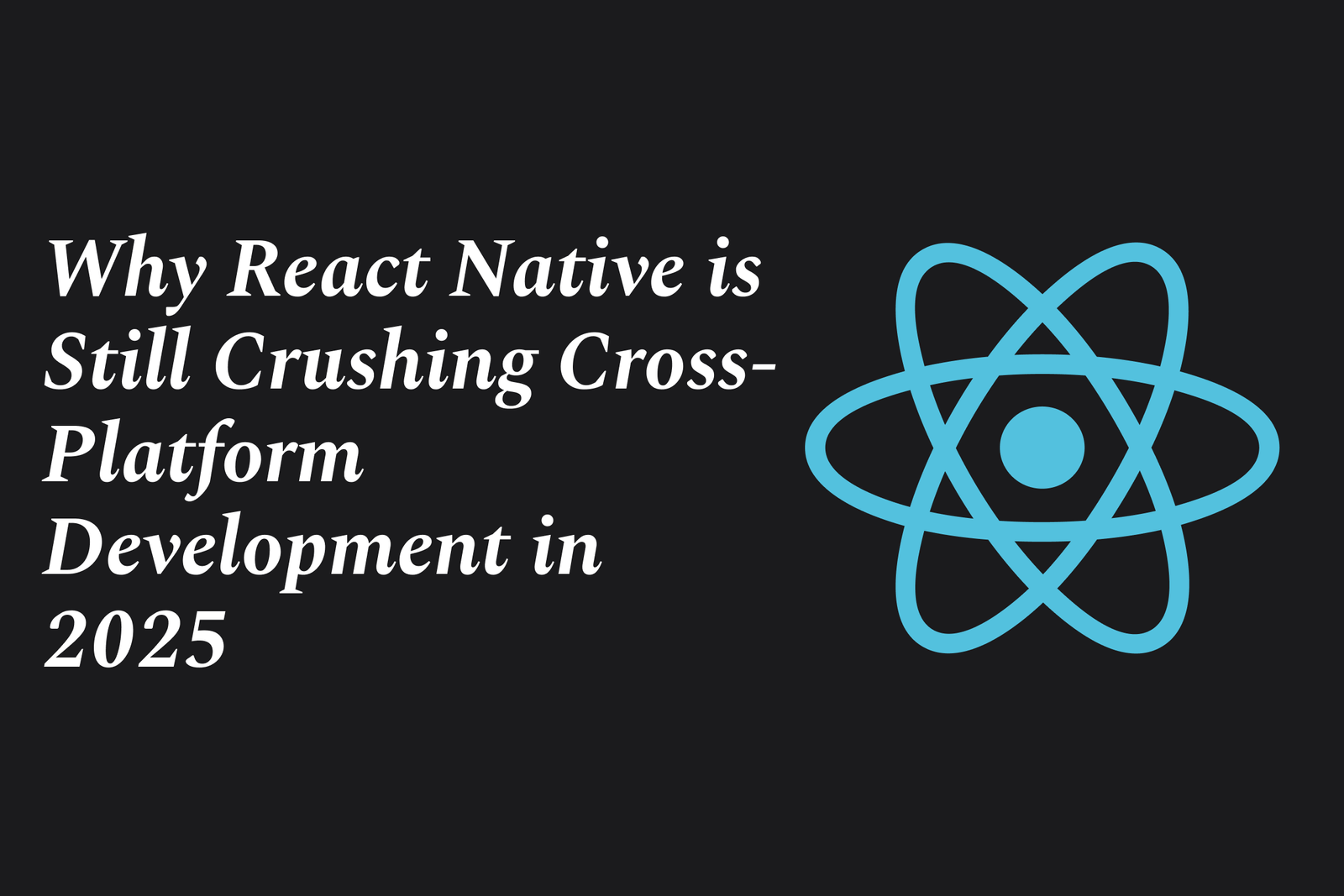Why React Native Is Still Crushing Cross-Platform Development in 2025
React Native remains dominant in 2025 by enabling fast, cost-effective cross-platform app development with a single codebase. Its mature ecosystem, near-native performance, and AI-powered tooling make it the go-to choice for developers seeking efficiency and broad reach.
Why React Native is Still Crushing Cross Platform Development in 2025
1 ) React Native’s Continued Relevance for Cross Platform Development
React Native remains a top choice for building cross platform apps in 2025 because it enables developers to create apps for both iOS and Android from a single codebase. This approach drastically reduces development time and cost while allowing businesses—especially startups and solo developers—to move fast and reach wider audiences without maintaining separate native codebases.
2 ) Advantages Highlighted by Industry Experiences
Speed and Market Reach: React Native allows quick prototyping and market testing across platforms from day one, speeding up go to market strategies.
Maintaining a Single Codebase: Avoiding the complexity and cost of managing separate iOS and Android teams is vital for small and mid sized players.
Performance and UI Quality: With careful development, React Native delivers near native performance and UI that feels natural on both platforms, overcoming past criticisms about sluggishness or plugin dependencies.
Robust Plugin Ecosystem: Unlike native frameworks where you might be stuck waiting for platform specific bug fixes, React Native’s open ecosystem lets developers fix or replace broken plugins swiftly.
3 ) Challenges & Competitor Insights
Apple’s SwiftUI and Native Approach: Although SwiftUI is powerful and suited for highly specialized iOS apps, it remains technically demanding and less accessible to many developers. Also, with growing user trends showing lower app downloads, niche skills like SwiftUI development have limited appeal for small businesses aiming for broad reach.
AI Assistance: Tools powered by AI (like GitHub Copilot) currently aid React Native development more effectively than Swift due to better understanding of JavaScript and React syntax, helping solo developers accelerate project delivery.
4 ) Why React Native Is The Realistic Choice in 2025
React Native’s biggest strength in 2025 lies in its realism—it balances development speed, cost efficiency, performance, and maintainability. This realistic approach helps teams build, launch, and validate ideas swiftly without being bogged down by the overhead of maintaining dual native codebases or mastering niche native frameworks.
5 ) Context in the Cross Platform Ecosystem
While other frameworks like Flutter and NativeScript are also gaining traction for delivering native like experiences, React Native’s mature ecosystem, developer familiarity, and integration with AI development tools keep it a solid, practical choice for cross platform app development, especially for startups and freelance developers.
Summary: React Native’s ability to support rapid, cost effective development with strong performance and cross platform reach ensures it continues “crushing” cross platform development challenges in 2025, despite competition and evolving platform specific tools.
https://justacademy.in/news-detail/android-app-monetization-strategies-2025
https://justacademy.in/news-detail/how-android-is-handling-app-permissions-in-2025
https://justacademy.in/news-detail/google-play-pass-subscription-news
https://justacademy.in/news-detail/android-new-api-releases
https://justacademy.in/news-detail/android-input-method-editors-updates
Related Posts
Java supports GDPR and data privacy by enabling secure data handling through encryption, controlled access, and precise data management. It allows developers to minimize PII exposure, ensure data confidentiality, and design workflows that comply with data protection regulations effectively.
Java code quality tools have evolved to include advanced static analysis, integrated security checks, and AI-powered code reviews. These updates help developers detect bugs, enforce coding standards, and enhance security, streamlining the development process and improving overall code reliability.
Java remains a cornerstone in big tech companies, evolving with modern features like records, pattern matching, and virtual threads. Its robust ecosystem, enhanced performance, and growing AI integrations keep it vital for both legacy systems and innovative new projects.
Java and CI/CD pipeline optimizations streamline Java application development by automating builds, tests, and deployments. They improve efficiency through parallelization, caching, and secure secrets management, enabling faster feedback loops and more reliable, scalable software delivery.
Java supports modern cryptography standards through its flexible Java Cryptography Architecture (JCA), enabling integration of advanced algorithms like AES, EdDSA, and post-quantum tools. Libraries like Bouncy Castle offer FIPS-certified, hardware-accelerated implementations for secure development.
Java 23 enhances record patterns by enabling concise, direct destructuring of record components within pattern matching, simplifying type checks and data extraction. This improvement boosts code readability and expressiveness by reducing boilerplate in handling immutable data classes.
Java remains a top choice for mobile app backends, powering scalable, secure, and high-performance server-side solutions. Latest trends include cloud-native microservices, reactive programming, and enhanced JVM optimizations, enabling efficient, flexible, and robust mobile backend development.
Java SE 24 and LTS Java SE 21 offer enhanced features and performance, while Apache Spark 4.0.0 introduces Scala 2.13 support and advanced ML and SQL capabilities. Together, they empower developers to build scalable, high-performance data applications with modern tools.
JUnit 5 modernizes Java testing with a modular architecture, improved assertions, and seamless Java 8+ support. Beyond JUnit, tools like Mockito and AssertJ enhance mocking and assertions, creating a powerful, flexible ecosystem for writing clean, efficient Java unit tests.
Java plays a pivotal role in cloud automation tools by providing a robust, platform-independent language used to build scalable automation frameworks like Jenkins and Selenium, enabling efficient CI/CD pipelines, testing, and orchestration across diverse cloud environments.










